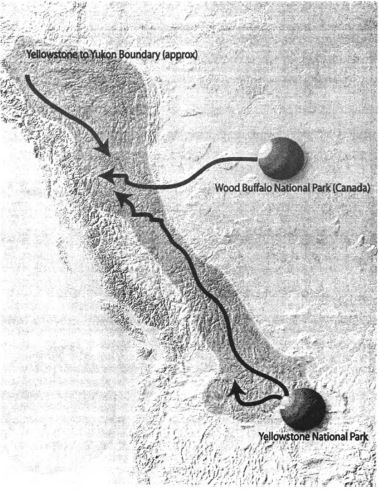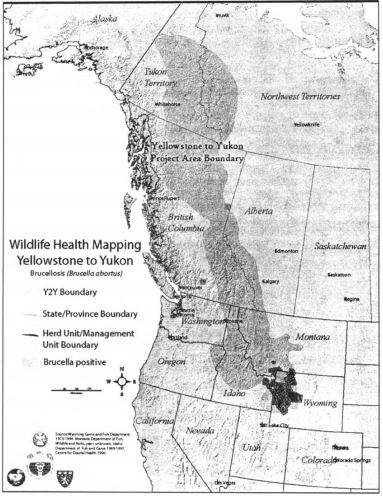Abstract
The Yellowstone to Yukon Conservation Medicine Program is a conservation-based research initiative designed to investigate issues related to wildlife disease throughout a region spanning from the greater Yellowstone Ecosystem to the MacKenzie Mountains of the Yukon Territories. The Yellowstone to Yukon (Y2Y) Wildlife Disease Mapping project is an innovative initiative to bring wildlife and ecosystem health into the conservation arena by documenting the distribution of important diseases, training future veterinary and human health professions in the concepts of conservation-based medicine, and using project information in the formulation of management decisions. Our program is dedicated to exploring methods of conserving health in wildlife populations and the habitats they reside in through synthesis of existing disease information via agency, university and international collaborations. We are using this information to model disease transmission via habitat corridors as they are planned and designed for the Yellowstone to Yukon Conservation Initiative (Fig. 1). Habitat design scenarios providing the least negative effect to current land use activities can be planned using present and past disease information and related and disparate variables. Using geographic information system mapping technology, we have mapped important wildlife diseases including brucellosis (Fig. 2), bovine tuberculosis, chronic wasting disease, sylvatic plague, Hantavirus infection, anthrax, tularemia, and rabies. Corresponding human infection is also mapped. The information is presented to the public and agency users via an electronic information system called the National Biological Information Infrastructure Wildlife Disease Node (http://wildlifedisease.nbii.gov [VIN editor: original URL was not accessible as of 3/2/2021]). Predictive analyses in this study are used as tools in habitat corridor design. Within our program we are also placing veterinary, medical, and conservation biology students in exciting new experiential learning opportunities involving globally important emerging diseases including using wildlife as sentinels for emerging disease and projects involving anthrax, plague among others.
Hypothetical wildlife disease transmission pathways within and outside the Yellowstone to Yukon bioregion

Figure 2. Areas testing positive for brucellosis by elk and bison within the Yellowstone to Yukon bioregion 1970–2002
